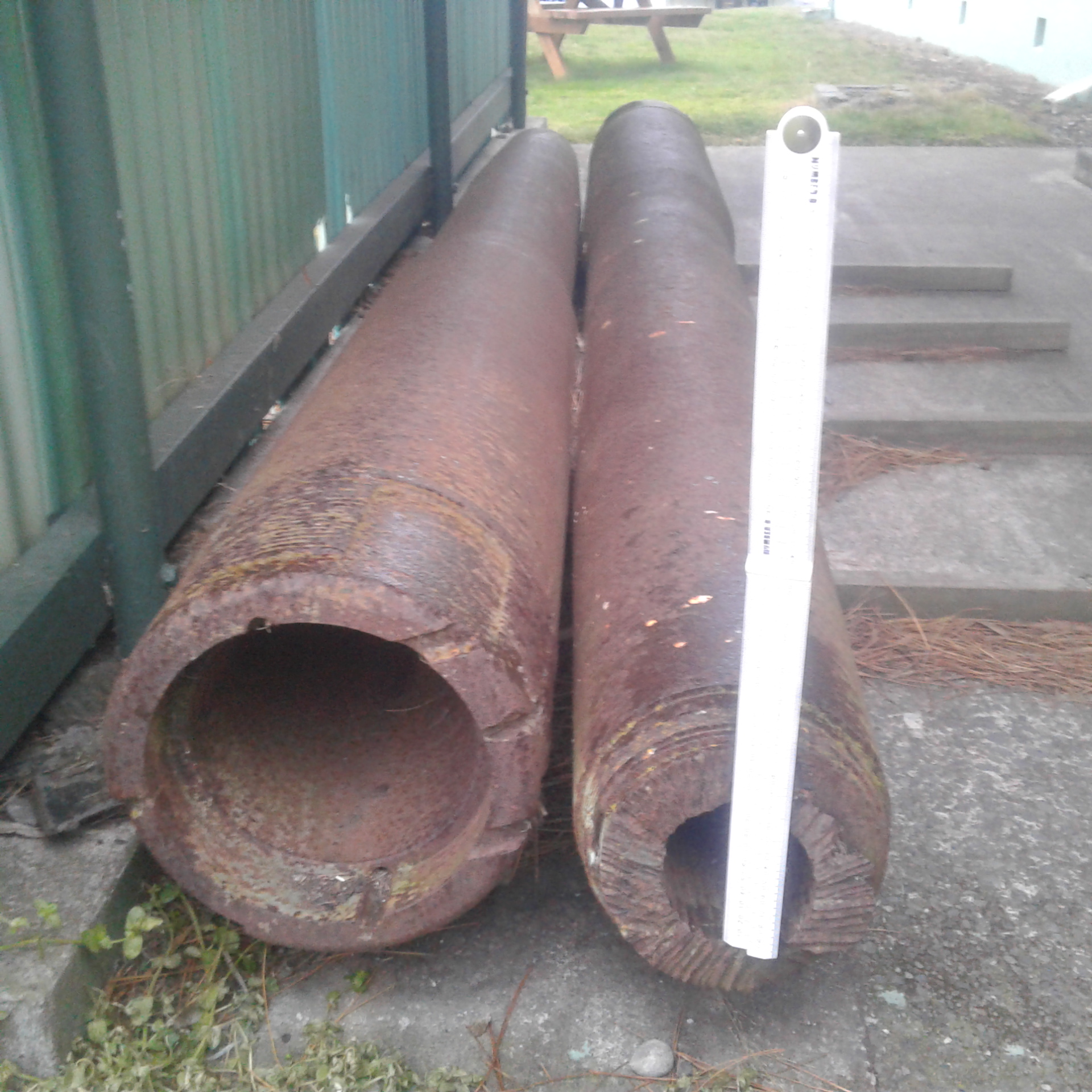Welcome guest, is this your first visit? Create Account now to join.
Welcome to the NZ Hunting and Shooting Forums.
Search Forums
User Tag List
+ Reply to Thread
Results 16 to 28 of 28
-
22-06-2020, 08:57 PM #16Member

- Join Date
- Dec 2014
- Location
- canterbury
- Posts
- 6,883
-
-
22-06-2020, 08:58 PM #17Member

- Join Date
- Dec 2014
- Location
- canterbury
- Posts
- 6,883
But these are only 4"
Just babies compared to the Armstrong's
-
22-06-2020, 09:14 PM #18
-
22-06-2020, 09:16 PM #19
If only they had not been cut, and stored inside....
Use enough gun
-
22-06-2020, 09:29 PM #20
Most of the breech blocks from these types of guns around NZ were dumped at sea.
The one at the Albatross colony at Duners is intact IIRC.
Have an excellent big book that I bought at the Albatross Centre about NZ's coastal defence batteries. Must dig it out.
-
23-06-2020, 11:18 AM #21Member

- Join Date
- Feb 2016
- Location
- Wellington/Porirua
- Posts
- 410
You are correct @zimmer. Not only intact, but the one at Taiaroa Head (the albatross colony) is the only functional one left in the world I believe. It received a full restoration in the 70s.
Is the book you've got Peter Cooke's Defending New Zealand: Ramparts on the Sea. Very interesting books. Two volume set.
I wrote my BA (Hons) thesis in 2013 on the archaeology of Dunedin's coastal military fortifications from the 1880's through til the end of WWII. It's been a while, but from memory I think we had 36 or so Armstrong Disappearing guns placed across NZ. & yeah, they dropped most of the breech blocks into the sea during WWII as the Armstrongs were well outdated by then. The Taiaroa Head one stayed in place as it was too difficult to remove from where they'd installed it.
-
23-06-2020, 01:52 PM #22Member

- Join Date
- Dec 2014
- Location
- canterbury
- Posts
- 6,883
Apparently the lyttelton dredge used to pick up the projectiles a lot.
The Ripapa guns must have had limited effectiveness and range because they are only about 15 meters above sea level.
And i guess they would have even bounced off the water surface
Whereas the Godley head guns are a long way above sea level and must have had a huge reach. But that was WW2 and technology had moved forward a long way
-
23-06-2020, 02:14 PM #23Member

- Join Date
- Feb 2016
- Location
- Wellington/Porirua
- Posts
- 410
@Mauser308 just dug out my old thesis to have a look. I don't have anything more specific on-hand, but the following is a brief section from my thesis regarding the Taiaroa Head Armstrong gun.
"Installed in 1889, the Armstrong Disappearing gun was operational until 1920, and then again from 1941 to 1943. During the Second World War, the fifty year old gun was reconditioned, but by then was obsolete and only useful to protect against enemy landing, as its range was too limited to be useful against offshore bombardment (Cooke 2000: 250). At this point, due to its age, there were doubts as to the guns reliability, and tales tell of an anxious gun-crew diving for cover during test firing of the weapon (Stark 1965: 6). The intimidating nature of this gun echoes through to its after its restoration, reflected in the words of Morrie Hammond who, in a 1987 letter, refers to the gun affectionately as "Bertha" while stating "This monster frightened me." (Hammond 1987: 1- 4). The gun was only ever fired once in anger, during the Second World War when a fishing boat entering the harbour failed to observe proper protocols (Sorrell 1999: 695). Now restored, it is the only working example of this type of gun in the world (Historic Fort Taiaroa 2008) as all New Zealand's other examples were either dumped in Cook Strait or melted down to avoid being captured by the enemy in the event of an invasion (Heyward 1999: 13; Cooke 2000: 119)."
-
23-06-2020, 11:07 PM #24Member

- Join Date
- Jul 2015
- Location
- Wellington
- Posts
- 869
I was just at Tairoa on the weekend. It’s in fantastic condition and the whole set up is brilliant. Only thing is they have must be twenty 303s in brackets along the walls of the emplacement tunnels just rusting away. Someone needs to give them some tlc.
Similar Threads
-
One-off Firearm part Import question
By omegaspeedy in forum Firearms, Optics and AccessoriesReplies: 19Last Post: 05-02-2018, 07:17 AM -
please take care up the hurunui this weeekend.
By scottrods in forum HuntingReplies: 3Last Post: 17-04-2015, 08:48 AM
Tags for this Thread
Welcome to NZ Hunting and Shooting Forums! We see you're new here, or arn't logged in. Create an account, and Login for full access including our FREE BUY and SELL section Register NOW!!





 16Likes
16Likes LinkBack URL
LinkBack URL About LinkBacks
About LinkBacks





 Reply With Quote
Reply With Quote


Bookmarks